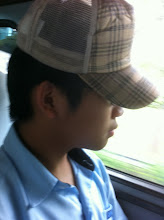The India King Cobra Snake




The King Cobra uses its menacing hood to warn off other animals. Its neck spreads to form a hood with a double chevron marking on the back. Its skin is olive green, tan or black with pale yellow crossbands down the length of the body. The underbelly is cream or yellow. The King Cobra detects prey by flicking its tongue out to collect scents from the air. Inside the mouth, the tongue passes over the Jacobson's organ - a receptor that analyzes different scents.
The King Cobra is mainly found in Asia, you can find it in clearings, amongst bamboo thickets and in the borders of the forest. In Northern India, the King Cobra can be found in forest, and up into the foothills of the Himalayas. Cobras can climb trees with ease, but will rarely do so unless chasing his next meal. King Cobras can also be found on farmland and in outlying parts of villages. As forests are cleaned, Cobras are increasingly encountered by humans.
The King Cobra preys on other snakes and lizards. It will attack venomous snakes and nonvenomous ones, such as small pythons. The cobra tracks prey by sight and by tasting the air with its tongue. It strikes quickly and its venom paralyzes the victim’s nervous system. The King Cobra can dislocate its jaws like other snakes, and gradually work its meal into its long stomach.
The King Cobra is active by day; it moves quietly through vegetation and deliberately avoids disturbances. If an intruder startles the King Cobra, it rears its head, spreads its neck to form a hood and sways back and forth. This is intended to intimidate the intruder so the Cobra does not have to strike. If an intruder does not leave when warned the Cobra will strike quickly and deadly. The Cobra's bite is little use against birds of prey, which swoop down from behind to strike the snakes head. The Cobra will hide in thickets to avoid these enemies.
In January, the male King Cobra starts to look for a mate. He tastes the air with his flickering tongue. Then, when he locates the female Cobra, he will rub his chin along her body to calm her and to stimulate her for mating. After a month of mating the two snakes emerge from their hiding place. The female seeks out a secluded spot, she then excavates a shallow, circular depression in the ground up to 3 feet. in diameter. There she deposits 40-50 eggs and remains on or near the nest until they hatch in 70 -77 days. The female defends her nest site aggressively. The male may also stay close by for a while to assist in defence. When the eggs hatch, the hatchlings are 12 to 25 inches long. Their venom, produced in small quantities, is just a powerful as an adults. As soon as all the young snakes have hatched, the female leaves them to look after themselves.
A King Cobra female will lay eggs about once per year. The King Cobra forest habitat is disappearing. In eastern Asia, the snake is killed to use in medicines and to eat. Although not yet endangered, the King Cobra has few allies and its population is likely to decline in the future.
Scientific Data: Cobras belong to the family Elapidae (Reptilia: Serpentes). There is much discussion among researchers and taxonomists as to the actual variations of both the African and Asian species. Venom researchers have known of these differences for some time, but did not have a sound systematic framework on which to base this. It was not until recently, with an interest in developing more effective antivenins, that extensive scientific research has been conducted into these differences. Due to the ongoing research in the field, the classifications and taxonomic naming of the varieties of cobras is currently dynamic. I have attempted to use that information herein which is most widely accepted.
In the past, Asian cobras have been generally classified as Naja naja. More recent population systematics research has revealed a number of sub-species as follows: N. naja in northern india and Pakistan, N. kauthia in Thailand, Cambodia and Vietnam; N. sumatrana in northern Malaysia and southern Thailand; N. oxiana in Pakistan, N. sagittifera in the Andaman Islands, N. atra in China, Taiwan, northern Vietnam, N. Philippinensis in the northern Philippines, N. samarensis in the southern Philippines, and N. sputatrix in southern Indonesia.
The king cobra is classified as Ophiophagus hannah (aka Hamadryad), the spitting cobra as Naja nigricollis, the Egyptian cobra as Naja haje, the water cobras as N. boulengerina, the tree cobras as N. pseudohaje, the "pink" cobra as N. pallida, and the shield-nose cobra as N. aspidelaps.

0 Comments:
Post a Comment
Subscribe to Post Comments [Atom]
<< Home